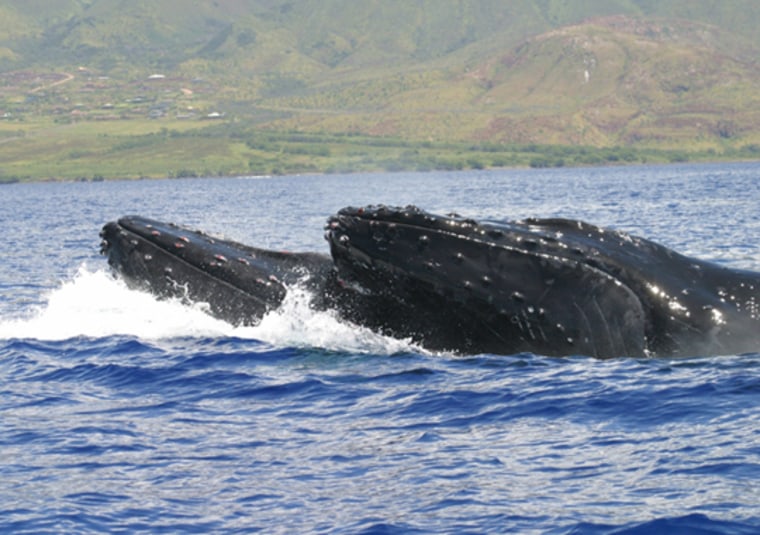While svelte, petite women may attract multiple suitors, bigger is definitely better in the whale world, according to a new study that found male humpback whales favor the largest females.
Big in terms of humpback whales means gigantic, since females are usually larger than males to begin with, measuring up to around 50 feet long and weighing approximately 79,000 pounds.
"While obesity is understandably a serious problem in humans, it is interesting to find that in some of the largest animals ever to exist, bigger is indeed better. Thus size does matter!" said lead author Adam Pack, an assistant professor of psychology and biology at the University of Hawaii at Hilo.
Pack, who is also the co-founder and vice president of The Dolphin Institute, and his research team made the determination after studying courting humpback whales for five consecutive years in the waters of the Auau, Kalohi and Pailolo channels off West Maui. The findings have been accepted for publication in the journal Animal Behavior.
In winter and spring months, the whales assemble on shallow banks and along coastal areas for breeding and calving. Since females produce a single calf every two to three years on average, and not all females migrate to breeding grounds, males usually far outnumber females at the sites.
Interested males serve as "escorts" for their female of choice, swimming in close proximity to her and, if present, her calf. The males all gravitated to the largest females, sometimes engaging in dangerous fights to win and maintain the coveted escort position.
"The principal escort's defensive behaviors include visual displays, such as lunging through the water with ventral throat grooves expanded, making the whale look visually larger, to screens of bubbles expelled from the blowhole or mouth, to chases and physical strikes, sometimes drawing blood from a rival," Pack explained.
In order to identify individual whales, he and his colleagues gave temporary names to the whales corresponding to the shape and markings on their dorsal fins. The study therefore included the whales "Scar," "Hook," "Tall" and more.
The researchers next measured each whale using both a hand-held sonar device and mathematical calculations based on angle of view and distance. The scientists even donned snorkeler gear and swam around, and underneath, the courting whales.
"Everyone who climbed back aboard after such an encounter was breathless from exertion, but more so from excitement," Pack said.
"Often, we could see their large eye rotating in its socket watching us, benignly it seemed, as they glided slowly by," he added. "As you can imagine, it's sometimes 'heart-stopping' being in the midst of these huge leviathans, the males charging at each other with great acceleration, the lone female untouched, yet appearing to take in all the action and likely assessing the fitness of her potential suitors."
Fitness appears to be behind the whales' fondness for fat and long bodies, since the researchers also discovered that the largest females also produced the biggest calves. Since whales depend upon stored body fat to support their metabolic requirements, particularly during the winter, the extra heft is necessary for their survival, promoting greater reproductive success and aiding females in the nursing of their offspring.
Big may also be valued in killer whale pods. Another new study, led by Eric Ward from the Northwest Fisheries Science Center, found that killer whale females nearing menopause — which tend to be larger since they're fully grown adults — make the best mothers.
"Older females may be more successful in raising young because of maternal experience, or they may allocate more effort to their offspring relative to younger females," Ward explained.
Proving that there is life over 50, at least among giant marine mammals, female killer whales can live to be more than 90 years old, long after their courting and calf-rearing days are over.
